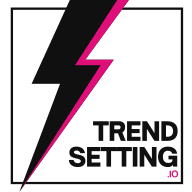How Do You Stay Ahead of the Curve in Identifying Micro-Trends?
In a rapidly evolving marketplace, staying ahead of micro-trends can make or break a company's success. Insights from a VP of Market Operations and a Marketing Consultant offer a deep dive into effective strategies. The article opens with the importance of following complementary industries and concludes with the value of observing and responding to customer feedback. Readers will find twelve expert insights to guide their approach.
- Follow Complementary Industries
- Focus on Silent Signals
- Monitor Social Media Platforms
- Attend Industry Events
- Track Economic and Demographic Changes
- Network with Industry Professionals
- Rely on Data-Driven Insights
- Engage with Industry Experts
- Use AI-Powered Social Listening
- Leverage Keyword Research Tools
- Blend Experience with Continuing Education
- Observe and Respond to Customer Feedback
Follow Complementary Industries
One of the keys to our success in identifying microtrends has been to identify complementary industries to follow. While there are definitely some "trends" in the moving space itself, we're far more likely to be downstream of trends in home decor, real estate, and lifestyle. We actively follow influencers in these sectors in order to stay on top of upcoming trends. Even small things like including trendy items in our moving ads can help us to gain some traction. Lately, it's been plant shelves.
Thank you for the chance to contribute to this piece! If you do choose to quote me, please refer to me as Nick Valentino, VP of Market Operations at Bellhop.

Focus on Silent Signals
I stay ahead of micro-trends by focusing on what I call 'silent signals'—those subtle changes in conversations, behaviors, or even comments that people overlook because they aren't loud enough to be labeled trends yet.
I pay attention to what people stop saying or doing, just as much as what they start to talk about. One example was when I noticed a sudden drop in the use of highly-filtered images on Instagram, right before the rise of the 'authenticity' movement.
I adjusted a client's campaign to show raw, unedited content early on, which led to a huge engagement spike while others were still focused on polished visuals.

Monitor Social Media Platforms
Stay ahead of the curve in identifying micro-trends; it's crucial for staying competitive in the ever-evolving market. It requires continuous learning, research, and a keen eye for detail. By keeping up with current market trends, you can position yourself as an expert in your field and provide valuable insights to your clients.
One way to stay ahead of the curve is by actively monitoring social media platforms and news outlets for any changes or developments in the real estate industry. For example, if there is a sudden increase in demand for eco-friendly homes, this could indicate a growing trend toward sustainability in housing.
For example, a few years ago I noticed an increase in the number of young professionals looking for homes with co-working spaces. This was a micro-trend that emerged from the rise of remote work and freelancing. By recognizing this trend early on, I was able to offer my clients unique properties that catered to their needs, giving me an advantage over other agents in the area.

Attend Industry Events
Staying ahead of the curve in identifying microtrends can be a key factor in being successful. It is important to constantly stay updated on current market trends and changes, as well as to actively seek out potential microtrends that may arise.
One way to do this is by regularly attending industry events and conferences, where you can network with other professionals and gain insights from their experiences. Additionally, staying connected with local neighborhood associations and keeping an eye on social media platforms such as Twitter and LinkedIn for discussions about upcoming developments or changes in your area can also be beneficial.

Track Economic and Demographic Changes
Identifying micro-trends and staying ahead of the curve is crucial for success in this industry. This involves being able to recognize small changes or patterns in the market that may have a significant impact on future trends. By being proactive and identifying these micro-trends, real estate agents can position themselves as experts in their field and provide valuable insights to their clients.
One way to stay ahead of the curve is by closely monitoring the economy and its effect on the housing market. For example, if there is a sudden influx of jobs in a particular area, it could lead to an increase in demand for housing and drive up prices. A real estate agent who anticipates this trend can advise their clients to invest in properties in that area before prices skyrocket.
Another way to identify micro-trends is by paying attention to changes in demographics and lifestyle preferences. For instance, if there is a rise in demand for eco-friendly homes or co-living spaces, real estate agents can tap into this trend and offer suitable properties to potential buyers. Similarly, keeping up with technological advancements and their impact on the housing market can also give agents an edge in identifying micro-trends.

Network with Industry Professionals
Networking with other professionals in the industry, such as lenders, developers, and contractors, can provide valuable insights on upcoming projects or changes in regulations that could affect the market. Attending industry events and conferences can also give agents the opportunity to learn about new technologies, marketing strategies, and trends in the market.
Social media is another valuable tool for staying ahead of micro-trends. Following real estate influencers, industry publications, and engaging with local community pages can provide insights on current and emerging trends. For example, following a popular home-renovation account on Instagram may reveal a growing trend towards modern-farmhouse-style homes in a particular neighborhood.

Rely on Data-Driven Insights
Staying ahead of microtrends is about constantly scanning the market and keeping a close ear to the ground. I rely heavily on data-driven insights, which come from both industry reports and real-time feedback from clients and my network. I also invest time in understanding customer behaviors and emerging technologies, attending relevant conferences, and connecting with thought leaders globally.
One example where this paid off was during the rise of remote work technologies. Years ago, I noticed an early shift towards flexible work setups and advised several clients to invest in cloud-based solutions before the demand surged. This proactive approach allowed them to scale seamlessly during the pandemic, while competitors were scrambling to catch up. Anticipating these microtrends is what helps businesses stay resilient and outperform in dynamic environments.
Engage with Industry Experts
To spot microtrends, stay connected with industry experts who are attuned to the latest developments in their fields. By regularly networking and engaging in conversations with these experts, you can gain insights into emerging trends and topics that may not yet be mainstream.
One example of how staying ahead of the curve in identifying microtrends can be advantageous is in the fashion industry. By keeping an eye on upcoming designers, new materials, and innovative techniques being used by smaller brands, larger fashion companies can capitalize on emerging trends before they become mainstream. This allows them to stay ahead of competitors and appeal to a niche market that is always looking for the next big thing.
Additionally, being able to identify and predict microtrends can also help businesses in other industries. For instance, by staying informed on changing consumer behaviors and preferences, companies can adapt their products or services to meet these demands before their competitors do. This not only gives them a competitive edge but also helps build brand loyalty among customers who value companies that are forward-thinking and innovative.

Use AI-Powered Social Listening
Hi,
I'm Jay Yue, a 2X-exited founder, and I recently raised $6M in the AI travel-tech space. I currently lead Growth at Wanderboat, where we serve over 300K monthly visitors.
Staying ahead of microtrends requires active engagement, data analysis, and strategic action. To effectively identify and leverage these trends, start by spending at least 10 minutes daily exploring your brand's social media feeds. Engage with followers, observe conversations, and look for emerging trends in your target audience's behavior.
Use AI-powered social listening and analytics tools to track mentions, keywords, influencers, and sentiment. These tools structure data into useful insights, helping identify trends efficiently. Keep up with trends by subscribing to social platform blogs and regularly checking Explore pages. These sources highlight popular content and conversations that can inspire real-time, relevant content creation.
Monitor trending hashtags and keywords on social platforms. Social listening tools often rank top-performing hashtags and posts, enabling you to spot emerging microtrends and adjust your content strategy. Use tools like Google Trends to track rising search queries. This helps create content that taps into what people are increasingly searching for in your industry.
Take a fashion brand that identifies the "Insta Aesthetics" trend early. By jumping on this trend, they could create campaigns around aesthetic themes like "Balletcore" or "Mermaidcore," collaborate with influencers, use relevant keywords for better discoverability, and release limited-edition products that capitalize on the trend. This agile response would boost social media engagement, attract new customers, generate buzz, and increase sales.
To capitalize on microtrends, speed is key. Streamline your marketing and production processes to act quickly. Consider working with consultants for fast-turnaround items or developing an omnichannel strategy that can be deployed rapidly across platforms.
By combining engagement, analytics, and agility, brands can stay ahead in identifying and leveraging microtrends to their advantage.
Thanks,
Jay Yue
929-355-5134
jay@uta-inc.com
wanderboat.ai

Leverage Keyword Research Tools
Keyword research tools like Ahrefs or SEMrush and Google Trends are some of the most superior ways to identify micro-trends, which oftentimes become macro trends.
Social media analytics tools are great as well. We've used BuzzSumo to identify what topics in the media are generating buzz across platforms like Facebook and Reddit, and then cross-referencing that data with previous emerging trends to predict which ones will likely become larger trends.
Another great resource is Google Ads Keyword Planner, where you can see the search volume over the years for specific keywords. Combined with other tools, you have a formidable trend-spotting and monitoring process.

Blend Experience with Continuing Education
Staying ahead of the curve in identifying micro-trends comes down to a combination of experience, continuing education, and being deeply in tune with patient needs. With over 30 years of experience in physiotherapy, I've learned that the industry is constantly evolving, and staying stagnant isn't an option. I make it a point to follow emerging research, attend professional development courses, and engage with my network of health professionals to spot early shifts in patient behavior and treatment approaches. By blending my formal education—a Bachelor of Applied Science in Physiotherapy and a Bachelor of Science—with decades of practical experience, I've developed a keen sense of when something is changing at a micro-level, whether it's an uptick in certain types of injuries or shifts in how patients approach their own wellness.
A prime example of this is when I noticed a rise in patients experiencing neck and shoulder pain from prolonged desk work in 2019, well before the shift to remote working during the pandemic. This observation led me to introduce more ergonomic assessments and preventive postural education into our treatment plans at The Alignment Studio. When the pandemic hit and work-from-home setups became the norm, we were already ahead of the curve, offering tailored advice and exercises to address these exact issues. Our proactive approach helped many clients avoid significant musculoskeletal problems that others were just beginning to see. This foresight didn't just come from luck but from years of closely monitoring patient trends and having the qualifications to implement effective strategies quickly.

Observe and Respond to Customer Feedback
Staying ahead—much like experimenting with new styles at Photo2Painting—involves constant observation and feedback. We use social media and customer requests to spot emerging art trends early, such as abstract minimalism. Incorporating these insights led to a 20% sales boost for our newest collection. A friend who tracks fashion trends shared how staying current resulted in higher engagement for her online boutique. The secret is paying close attention to what's gaining popularity before it becomes mainstream.



